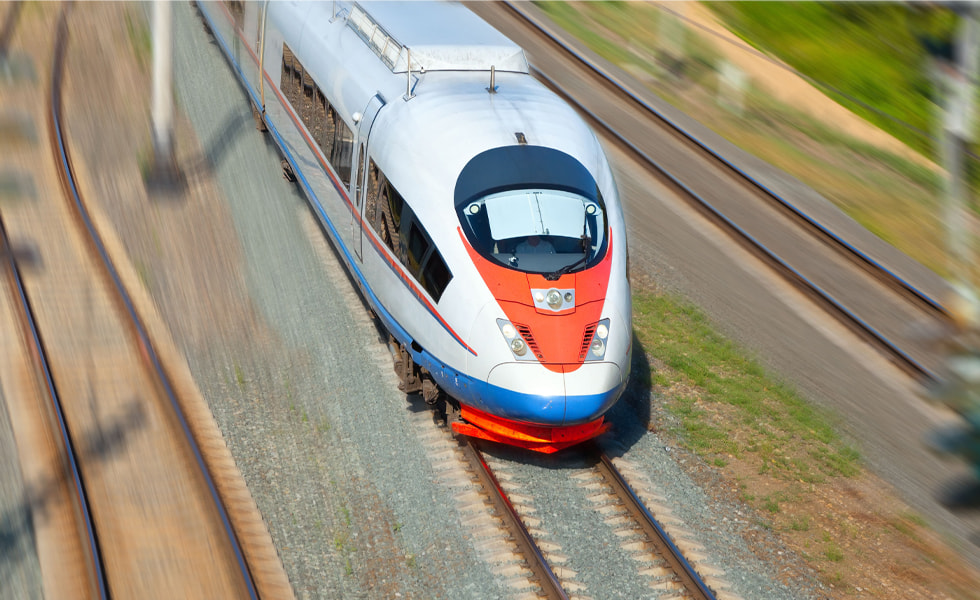
Photovoltaic rail transport: How does it work?
Rail companies can install solar modules on the roof of trains to generate power for onboard services, such as air conditioning, lighting, and security. They can also install solar panels nearby or on train tracks to generate electricity to run trains and distribute power to the grid.
This could provide a solution for rail networks that rely heavily on distribution grids, as some grids are approaching full capacity and lack the financing that they need to expand their capacity.
While it is difficult to secure the grid capacity to supply renewable electricity to power rail networks, by installing PV generation for their own use operators can reduce their reliance on overloaded grid networks.
The International Energy Agency (IEA) predicted in 2019 that the global rail network could expand from 1.6 million kilometers in 2016 to 2.1 million kilometers in 2050, an increase of 34%. That would increase electricity demand from the sector to nearly 700 TWh, requiring additional power generation capacity to be installed. Renewable energy provides a solution to increasing energy supply while reducing the transport sector’s CO2 emissions.
Photovoltaic Train (Pvtrain), a project run by Italy’s primary train operator Trenitalia, was the first attempt in Europe to test the viability of using PV cells to charge onboard accumulators.
The project ran from November 2003 to October 2005, with an observation period starting in July 2003. During the observation period, the prototype trains used 1,378.42 kWh of electricity, reducing CO2 emission by 1,033.82 kg.
Between August 2004 and October 2005, the prototypes used 159.3 kWh, which was enough to power the onboard accumulators while reducing CO2 emissions by 119.95 kg. The prototype freight wagons used 540 kWh, enough to power the electrical locks while reducing CO2 emissions by 405.51 kg.
It is estimated that for every kWh of electricity generated, using PV modules emits 750g less CO2 into the atmosphere. In addition, the constant flow of electrical current extends the lifespan of the onboard accumulators.
Photovoltaic rail transport: The benefits
In December 2022, French railway operators SNCF Reseau and INES announced a collaboration to develop PV systems to enable rail networks to use renewable electricity.
The collaboration aims to:
• reduce energy losses
• optimize costs
• increase PV generation efficiency
• increase digitalization
• improve reliability
Innovative converters will connect medium-voltage direct current (MVDC) modules to the microgrid. The microgrid will demonstrate how to increase PV production efficiently while interconnecting assets within the MVDC network. The MVDC microgrid will connect to the main grid through a solid-state transformer (SST), with the aim of operating a smart system.
Photovoltaic rail transport: The concerns
While PV rail transport has the potential to provide solutions for rail infrastructure power supply and reduce CO2 emissions, there are challenges the sector must address.
The cost of installing rooftop PV on trains remains too prohibitive to be viable on a large scale. For example, in 2017, Australia operated a 100% solar-powered train with a 6.5 kW PV system installed on the rooftops of its two coaches. The battery powered the train for 6-7 return trips on its 3km track and there was a 30 kW system installed at the train station to recharge the battery.
However, with a cost of A$6mn, the train would have to make 350 return trips a day to remain viable, which was not feasible because of its limited schedule in daylight hours. The rooftop PV systems in India are used to power only the lights on board the trains to keep costs down.
Converting railways to run on PV power also presents a challenge because of the large volumes of electricity they consume. The UK launched a 30 kW solar PV system in 2019 to supply electricity directly to a train station to power the signaling and lights. But given that UK trains consume 4.05 GWh of electricity annually, it would be difficult to install enough solar capacity to fully run a railway network.
